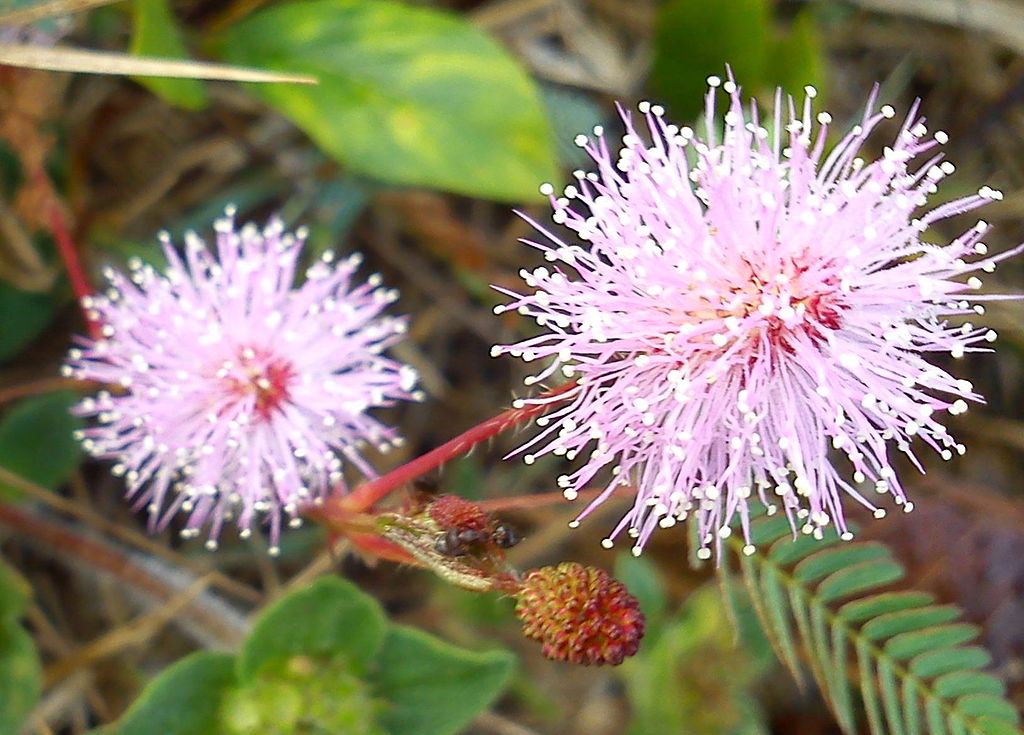
They don’t have brains, nerves, or mouths, but plants are quietly showing signs of intelligence that scientists are only just beginning to understand. It turns out plants might not be the passive green background characters we thought—they can adapt to patterns, remember past experiences, and even “communicate” with neighbouring plants to pass along vital information. It’s not memory or learning the way we know it, but it’s eerily close. Here are just some of the incredible ways plants are proving they’re much more switched on than we ever gave them credit for.
They can remember bad experiences.
The mimosa pudica plant, known for folding its leaves when touched, was used in a famous experiment to test memory. When scientists repeatedly dropped it without causing harm, it eventually stopped reacting. The plant had “learned” that the drop wasn’t dangerous.
Even weeks later, it still remembered and didn’t fold up when dropped again. That’s not just a reflex—it’s a kind of memory storage. It shows plants can change their behaviour based on past experience, even without a brain.
They learn through repetition.
Plants often respond to patterns in light, temperature, and touch. However, when a stimulus repeats in a predictable way, they don’t just react—they start anticipating it. This kind of behavioural change shows that plants can learn through repeated exposure. In other words, they don’t just respond automatically. They “learn” what’s likely to happen next, adjusting themselves to suit the pattern. It’s the plant equivalent of knowing when your alarm is about to go off.
Some plants pass on warnings to others.
When a plant gets attacked by insects, it doesn’t just suffer quietly. Some release airborne chemicals that nearby plants can pick up on. Those neighbours then activate their own defences, even though they haven’t been bitten yet. It’s not direct teaching, but it’s information-sharing. The injured plant sends a warning, and its companions learn from the experience without having to go through it themselves. That’s basically the plant world’s version of shouting “watch out!”
They can “smell” danger.
Plants don’t have noses, but they’re surprisingly sensitive to airborne molecules. If one plant releases distress chemicals, another can detect them and react accordingly—by boosting its defences, altering its growth, or producing bitter compounds to deter pests. That detection and response suggests plants are aware of their environment in ways we’ve only just started to grasp. They’re not oblivious; they’re paying attention in ways we don’t fully understand yet.
They adjust behaviour based on past stress.
Plants that have been exposed to drought, extreme heat, or trauma often become better at coping the next time it happens. Their root systems adjust, they conserve water differently, and they make internal chemical changes that help them endure it better in the future. This is a form of physiological memory. They’re not just bouncing back—they’re adapting based on what happened last time. Some plants even pass these adaptations down to the next generation through seeds.

They can change future growth based on touch.
Some climbing plants don’t just grope around blindly for support—they learn where to grow by sensing touch. If a tendril finds a solid structure, it wraps around. If it finds something unstable or too smooth, it avoids it next time. This means they’re not randomly shooting out growth—they’re collecting information and using it to make smarter choices. It’s slow, but it’s purposeful. They’re not just growing—they’re strategising.
They can count (sort of).
In a study with Venus flytraps, researchers found that the plant won’t snap shut just from one touch. It waits until two triggers have been hit within a short time—kind of like a safety check. It can even count up to five touches to judge how much it’s caught and how much digestive enzyme to produce.
This level of sensitivity shows that the plant isn’t just reacting—it’s making calculations. Basic ones, sure, but calculations all the same. It’s a biological tally system hidden in a carnivorous plant.
Root tips can sense and react like tiny brains.
Some researchers argue that the tips of roots behave a bit like primitive brains. They process signals, change direction based on information, and even prioritise certain paths over others depending on what they detect in the soil. This doesn’t mean roots are thinking, but it does mean they’re analysing data and making choices. When hundreds of root tips work together like this, it forms a complex underground system—more responsive than we ever imagined.
They remember light patterns.
Some plants adjust their internal clocks based on regular exposure to sunlight or artificial light. If you move a plant to a new time zone, it actually takes a while to “reset”—just like us dealing with jet lag. This internal memory of light cycles helps them time their blooming, growth spurts, and energy storage. They’re keeping track of time, not with watches, but with cell-level memory that syncs with the sun.
Some can mimic damage to fake being unappetising.
There are plants that learn to grow in ways that mimic having already been chewed or diseased. This isn’t a genetic fluke; it’s an adaptive growth strategy meant to trick herbivores into leaving them alone. In effect, they’re learning from their surroundings and responding in a way that deters danger without ever being harmed. It’s defensive mimicry based on past exposure and survival instinct, not just DNA.
Plants under attack change their offspring.
If a plant is exposed to stress, like insect attacks or drought, its offspring are often better equipped to deal with the same challenges. This suggests some kind of inherited memory, passed on epigenetically through the seeds. It’s not learned in the classic sense, but it shows plants can prepare the next generation based on what they went through. They’re not just reacting to their world—they’re teaching their descendants how to survive in it.
Some plants recognise their neighbours.
Plants of the same species can sometimes tell when they’re growing next to their own “kin.” In some cases, they’ll grow less aggressively or avoid competing as strongly when surrounded by related plants. However, when surrounded by strangers, it’s all-out root warfare. The ability to distinguish between self, family, and outsider is incredibly complex for something with no eyes or ears. It shows that plants are more aware of their social environment than we give them credit for.